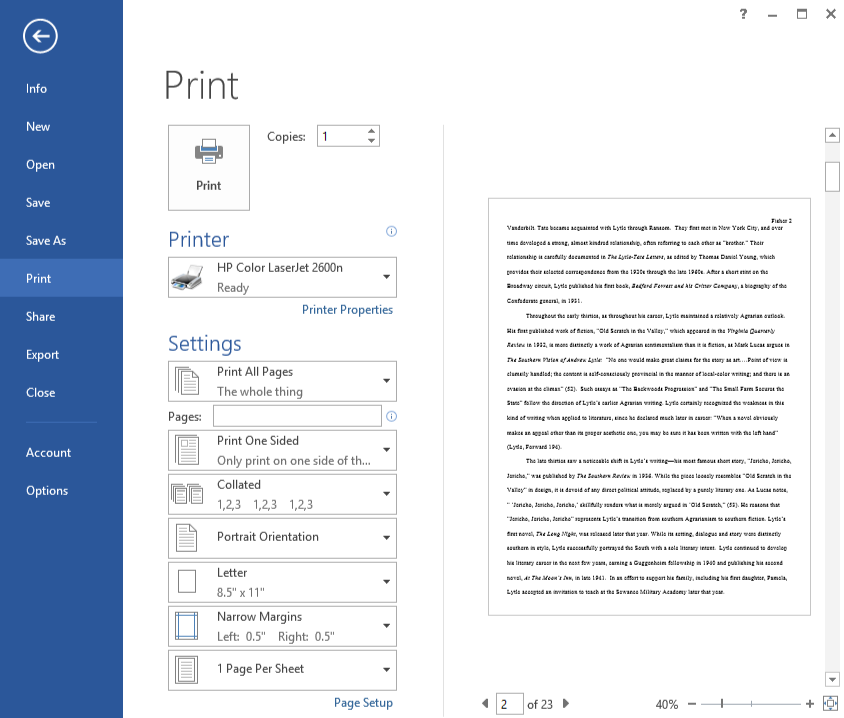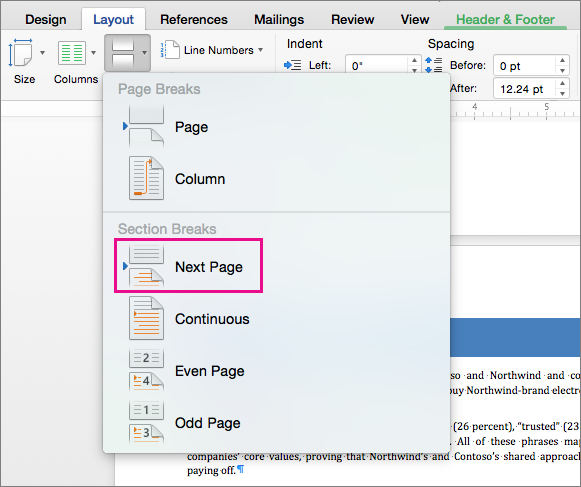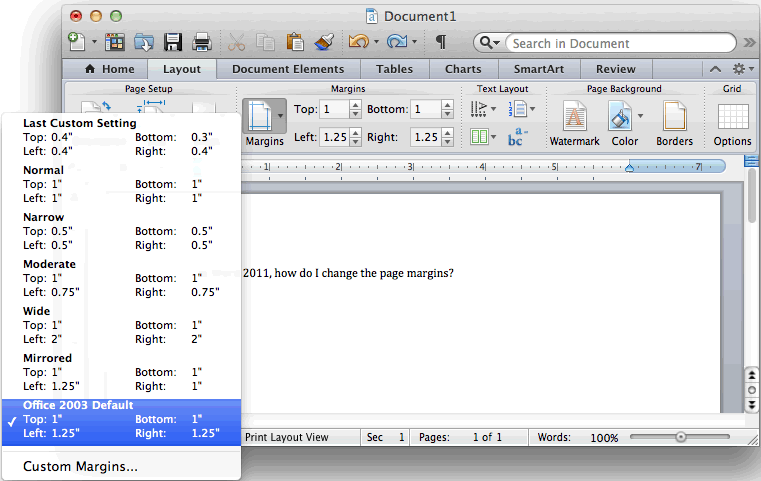- How To Set Margin On Word 2016 For Macbook Pro
- How To Set Margin On Word 2016 For Macs
- How To Set Margin On Word 2016 For Macbook Air
- How To Set Margin On Word 2016 For Mac Os
on ADD Balance by Madison Wisconsin Criminal Defense Lawyer Charles Kenyon with input and suggestions from many on Click here to skip past FAQ questions list and other info and go directly to the start of this topic. Search the FAQ site on Google. Remember to Refresh your page. [F5]. |
History and Workarounds
Answer: Select the Layout tab in the toolbar at the top of the screen. Then in the Margins group, click on the Margin button. This will open a popup menu where you can select one of the preset margins or 'Custom Margins'.

Margins in Word 2016 documents create the text area on a page, left, right, top, and bottom. They provide room between the text and the page’s edge, which keeps the text from leaking out of a document and all over the computer. Word automatically sets page margins at 1 inch from every page edge. Customize Margins to Set a New One Step 2#. Customize Margins: Now in this step, you can set or customize your own margins. To set a new margin just click on Custom Margins that is the bottom of the new window, On the new window, you have many options for setting a new margin on your page. When you insert a footnote in Word (References tab Insert Footnote), by default it gets added to the bottom of the page along with a short line and an empty paragraph to separate it from the body of the text. The footnote separator line and the empty paragraph are styled as ‘Normal’, so if you’ve adjusted the paragraph spacing (leading.
Microsoft Word has long had the option of displaying the page margins as 'text boundaries.' Here is a screenshot from Word 97 with them displayed and with the option dialog that turns display on or off:
Note that the Horizontal and Vertical Rulers also display the margins, but this is not quite as intuitive for many users. Here are two screenshots of the same document in Word 2010 with Text Boundaries displayed and not displayed:
Many Word users use this feature to tell them, at a glance, where their page margins are. Shauna Kelly recommended turning them on in her beginner's tutorial. Personally, I found them distracting and simply used the Rulers.
However, the designers at Microsoft were apparently unaware that these dotted lines were even being used for this purpose and changed their text layout engine in Word. This changed the display of these dotted lines to a paragraph boundary rather than a page boundary. There is no way to change this display in Word 2013-2019/365 and it is highly unlikely that it will be changed back.
As reported by Suzanne Barnhill and others, Microsoft's take on this is that text boundaries are 'a feature that was never supposed to be a feature,' 'a window into the internals of word' that should probably never have been exposed to users.
The feature 'just draws a border around [Word's] internal drawing rectangles,' and those have now changed with the switch to a hardware-accelerated display. So Word 'is doing precisely what it has always done (drawing borders around internal data structures). Unfortunately, this means that scenarios that used to work accidentally now don’t work the same way. There’s really no way to bring back the old functionality – it truly doesn’t exist.'
If the document in Word 2013 is opened in compatibility mode to any earlier version of Word the boundaries revert to the previous display. For those interested, here is a link to a lengthy discussion of this change with workarounds:
http://answers.microsoft.com/en-us/office/forum/office_2013_release-word/how-to-expand-text-boundaries-in-word-2013/bac7738a-7566-4b23-9fb8-d3156fca2c3b?page=1&tm=1395665485247
For sample templates that have two of the discussed workarounds for Word 2013-2019/365 see my Downloads Page.
If you feel that Microsoft should change these back, here is a page where you can let them know. (It has been 'under consideration' since 2015.) More votes won't hurt.
How to Get Rid of Them!
It depends on which version of Word you are using.
Word for Windows
Word 2007 (and later) on Windows

File > (Word) Options > Advanced
Word 97-2003 on Windows
Tools > Options > View
Word for the Mac

Word > Preferences > View
Images from Philip Jones' post on the Microsoft Answers Forum.
Word 2016 (and later?) on the Mac

Word 2011 on the Mac
How To Set Margin On Word 2016 For Macbook Pro
Return to Questions List
Changes / suggestions / ideas can be sent to Charles Kenyon.
Page views since 23 November 2011
How To Set Margin On Word 2016 For Macs
Many people visit this site and use the information it contains.
It costs money to keep on line and effort to update.
If you have received assistance here
please consider making a donation if you can.
Thank you. ckk
How To Set Margin On Word 2016 For Macbook Air
Copyright 2000-2021 Charles Kyle Kenyon
FAQ provided as an adjunct / hobby as a part of my web site as a criminal defense lawyer.
In Word for Mac OS X, to change the margins of an entiredocument, from the Format menu, selectDocument.... In the resulting window, click theMargins tab. Change the values in the boxes by entering newnumbers or by using the up and down arrows.
How To Set Margin On Word 2016 For Mac Os
To set different margins for different sections of the same document,you can insert section breaks. To do this, move the cursor to wherethe new section should start. From the Insert menu, selectBreak, and then select the appropriate type of sectionbreak. A section will continue to the end of the document or up to thenext section break.
